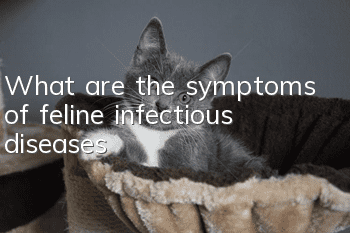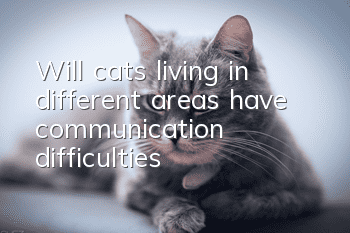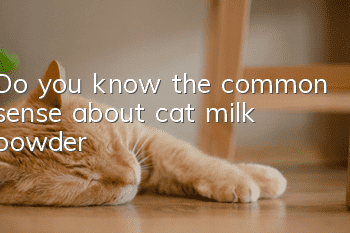What are the symptoms of feline infectious diseases?

Symptoms of feline infectious diseases:
1. Feline distemper: Kittens under 6 months old are susceptible to infection, and unimmunized adult cats occasionally cause severe vomiting and diarrhea. The mortality rate is high, which is closely related to the age of the cat and the course of the disease.
2. Cat nasal branch: The main symptoms are in the respiratory tract, including runny nose, sneezing, cough, conjunctivitis, a large amount of serous secretions in the eyes and nose, and then turn into purulent secretions, and the body temperature rises. Ulcers appear on the lips, tongue, and jaws. The eyes of kittens are prone to serious damage, which may change from suppurative to ulcerative damage, but the mortality rate is low, and the mortality rate of kittens is relatively high.
3. Feline Calicivirus: Symptoms in the upper respiratory tract are very similar to those in cats with rhinocele, but the incubation period before onset is longer, which can be up to 19 days. The most common symptom is increased saliva, and the onset time is 1-4 weeks. Among them, the morbidity rate is high and the mortality rate is low, and young cats can cause viral pneumonia.
4. Feline enteric coronavirus: Kittens aged 4-12 weeks show mild enteritis. When the intestinal epithelial cells are massively damaged, obvious clinical symptoms will appear. Vomiting will occur at the beginning of the disease, and diarrhea will occur in 12-48 hours.
5. Symptoms of feline infectious peritonitis: body spasms, ataxia. The dry type has no ascites and mainly suffers from eye diseases, such as corneal edema.
Prevention of feline infectious diseases:
1. Newborn kittens can usually be protected by antibodies in the mother cat’s milk, so the mother cat should first Get vaccinated.
2. When the antibodies in the mother cat’s milk subside, in order to maintain and enhance the resistance to the disease, a series of vaccinations should be started when the kittens are close to eight weeks old and continue until four months.
3. Life-long protection is maintained through annual booster vaccinations.
- The use and precautions of Fulien Cat Drops are a must-read for pet owners!
- What's the problem when a Ragdoll cat's stool is hard at first and then soft? It's a gastrointestinal problem for Ragdoll cats!
- How much does a savannah cat cost?
- There are several "minefields" in cat breeding that must not be stepped on!
- How to completely remove cat ear mites?
- What foods should pet cats not eat?
- My cat won’t eat after giving birth to kittens
- Cat dietary taboos and how to cook in autumn
- How many months does it take for a British Shorthair to develop blue and white cheeks?
- What pet owners need to know: A complete list of common skin diseases in dogs and cats



